Media Literacy Education
Topic outline
-

This course provides essential knowledge and skills on media literacy and critical thinking, required for understanding contemporary media and media content, as well as for understanding, interpreting and creating messages and articles that we receive and send via mass media. It contains 20 lessons and employs the blended learning method, an approach to education that combines online educational materials and opportunities for interaction online with classical lecture/classroom type of teaching. The participants will be familiarized with and introduced to the key concepts in the field of media and communication, empowered and encouraged to take a critical, active citizen and socially responsible role towards the contemporary media landscape, and trained to produce articles in English of publishable quality. They will learn about the importance and influence of the media, their pervasiveness, the way that the messages are constricted and how they could be deconstructed, decoded and critically assessed in terms of quality, reliability, objectivity etc. and grasp the wider context in which the media function and the discourse they use to address the users/recipients.
The course will cover several larger areas of the media universe, each covering a number of different topics: Types of Media: Traditional vs. Social; various meanings of media literacy; 5W + 1H – essential rules of responsible journalism (Who?, What?, When?, Where? and Why?, plus: How?); Find a Villain – How to analyse and critically read media messages?; The World in 30 Minutes: Constructing a TV News Lineup; Representation and Symbolism in the Media; Bias in the Media; Spin Doctors – What is Media Spinning?; "Fake" News and how to recognize them (CRAP test), The Power of Media (a very short history of the mass media, investigative journalism and examples of the most influential cases in history of media – the Watergate scandal, WikiLeaks, Panama papers), several lesson on style and writing in English and how to improve your research, writing and publicizing skills. Participants are most welcome to submit their work to TYM.
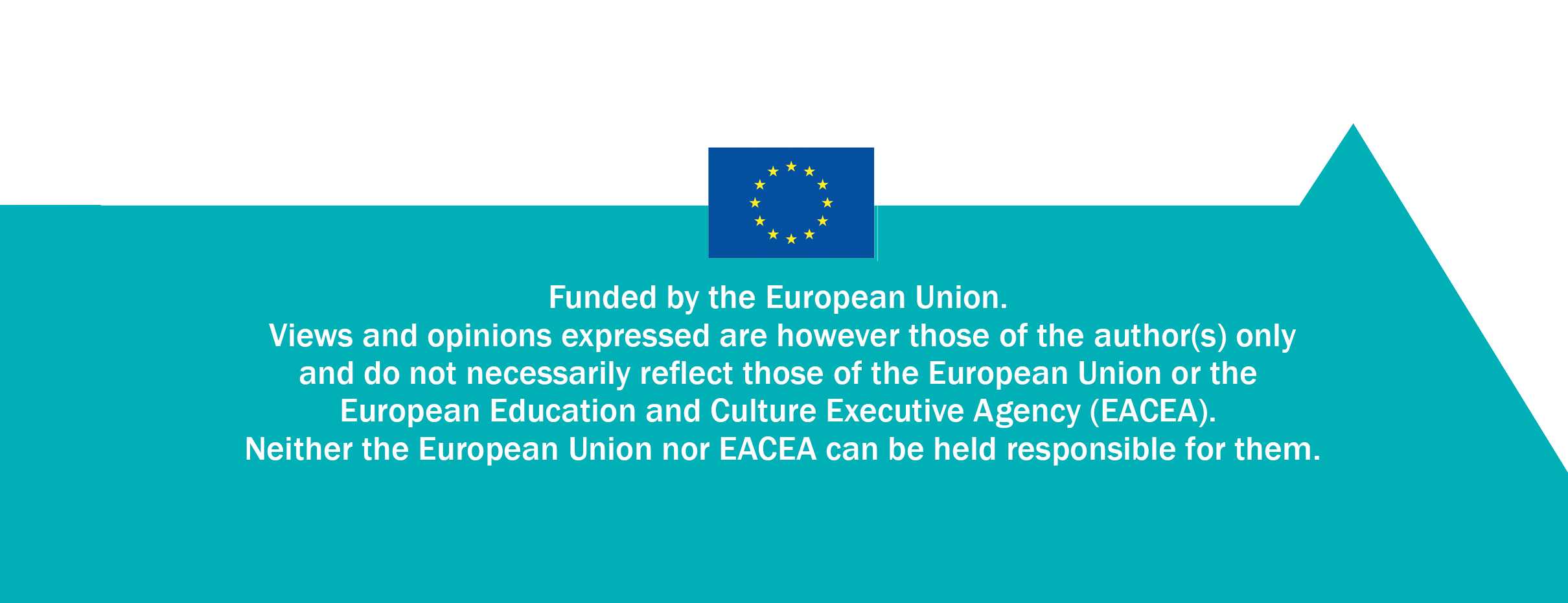
-
 The aim of this course is to offer an introduction to some basic concepts of media literacy. This means
The aim of this course is to offer an introduction to some basic concepts of media literacy. This means  understanding the role and power of the media in today’s world, but also understanding how media messages are constructed and, as much as possible, acquiring the skills to make them yourself. In order to get an insight into media literacy, we will cover in more detail these 6 topics:
understanding the role and power of the media in today’s world, but also understanding how media messages are constructed and, as much as possible, acquiring the skills to make them yourself. In order to get an insight into media literacy, we will cover in more detail these 6 topics:
What is Media Literacy?
How to critically read media messages?
The essence of responsible journalism
Basic principles of writing
The elements of style
Youth activism and the media
As you can see, some units are more informative and provide brief theoretical explanation of the basic concepts, while others are more practical and oriented towards expressing yourselves.LESSON 1 – Introduction
This lesson introduces the course on media literacy education, that is, the 20 lessons and the blended learning method.Watch a short introductory video to the LESSON 1.
-

Lesson 2 introduces the notion of the media. You will learn about
 the concept of the media, the origin and meaning of the word, examples of various media, from traditional to the most current, understand mass and global media, and discuss the role of the media in the process of communication.
the concept of the media, the origin and meaning of the word, examples of various media, from traditional to the most current, understand mass and global media, and discuss the role of the media in the process of communication.Watch a short introductory video to the LESSON 2.
-
A short video explaining the meaning of the notions media and communication.

Prezi presentation of the lecture can be found here.
So, what are these media and, more specifically, mass media that are so important today?
In order to grasp the role of the media, we need first to understand the role of media in the process of communication. The term media comes from a Latin word medium, which means something in between. In the process of communication, media is thus something that mediates, something that connects or transmits messages or participants in communication.
A classical model of communication, as described by a Russian-born linguist Roman Jakobson, has 2 basic constituents:
-
-
 This topic introduces the notion of media literacy. You will learn about the distinction betweenthe narrow notion of media literacy as the ability to read and write and a wider notion of
This topic introduces the notion of media literacy. You will learn about the distinction betweenthe narrow notion of media literacy as the ability to read and write and a wider notion of
literacy as the possession of certain knowledge and skills. Also, we will discuss the concept of
functional literacy and what does it mean to be media literate in today’s world.Watch a short introductory video to the LESSON 3.-
A short video lecture explaining the notion of media literacy.
Prezi presentation of the lecture can be found here.
-
Reading - Paris 2007 Declaration on Media Education
UNESCO takes Media literacy seriously!
Already in 1982, UNESCO made a so-called Grunewald Declaration, stating:
‘We live in a world where media are omnipresent: an increasing number of people spend a great deal of time watching television, reading newspapers and magazines, playing records and listening to the radio. In some countries, for example, children already spend more time watching television than they do attending school.’
‘Rather than condemn or endorse the undoubted power of the media, we need to accept their significant impact and penetration throughout the world as an established fact, and also appreciate their importance as an element of culture in today’s world. The role of communication and media in the process of development should not be underestimated, nor the function of media as instruments for the citizen’s active participation in society. Political and educational systems need to recognize their obligations to promote in their citizens a critical understanding of the phenomena of communication.’
In 2007, UNESCO made another declaration in Paris, which you can read above or here.
-
Opened: Tuesday, 16 January 2024, 1:00 AM
Exercise - Short summary of the Paris Agenda (200-300 words).
Try to formulate a summary by briefly answering the following questions: Who, when and why adopted the Paris Agenda? What are the four guidelines from the Grünwald Declaration that remained valid in the Paris Agenda? What are the recommendations for each of the four guidelines? Which of the guidelines you consider as most important and why?
-
-
-

 Critically reading media messages means to be aware and to think critically about the angle from which that the story is being told.
Critically reading media messages means to be aware and to think critically about the angle from which that the story is being told.Watch a short introductory video to the LESSON 4.
-
Critically reading media messages means to be aware, to think, and to think critically, about this angle that the story is being told. We will illustrate this point by looking at several different media footage of the Syrian crisis.Prezi presentation of the lecture can be found here.
-
Opened: Saturday, 16 December 2023, 12:00 AMDue: Friday, 16 January 2026, 1:00 AM
CHINA AND RUSSIA IN USA POLITICS AND THE MEDIA
Task: Watch these 2 short clips carefully
Now, think about and try to formulate answer to the following questions in the form of a couple of short paragraphs (up to 500 words in total):
Who would be the 'bad' and who the 'good guys' here?
Who amongst the officials has been presented, i.e. whose statements were given?
How do clips from China and Russia look like?
What do you think about the overall position-standpoint of the clip's author?
Does that tell us something about the overall attitude of the given TV network and the audience/society it addresses overall?
-
-

This lesson introduces the basic principles of journalism.

Watch a short introductory video to the LESSON 5.
-
Lecture Basic Principles of Journalism introduces the basic things that we expect to see in any good media reporting. Its essence is summarized in the 5 Ws and 1H principle, meaning that your information should contain answers to the following 5 questions: Who, What, Why, When and Where, as well as How.
Prezi presentation of the lecture can be found here.
-

This presentation summarizes the development of responsible journalism and provides examples of the most influential cases in the history of investigative journalism The Watergate scandal, WikiLeaks, Panama papers...
-
-


This topic offers practical advice on some of the basic principles of good reporting. Based mainly on an engaging blog entry Journalistics of the journalist James Porter and other similar sources, it summarizes these elements into a top 10 tips for good reporting. These 10 practical rules are: Name your sources; Be objective; Offer balance; Get it right; Don’t plagiarize; Don’t believe everything; Keep good records; Don’t write in a stream of consciousness; Find your voice; Never stop learning and have fun.
Watch a short introductory video to the LESSON 6.
-
This short video lecture offers Top 10 essential rules of journalism or 10 practical tips for good reporting, adapted from the list by Jeremy Porter from the blog Journalistics.
.
Prezi presentation of the lecture can be found here.
-

Investigative journalism is often defined as a form of journalism in which reporters deeply investigate a single topic of interest, such as serious crimes, political corruption, or corporate wrongdoing.
Organizations of investigative journalists
•IRE (www.ire.org) – for years, it gathers journalists, editors, educators and trainers, as well as student, from USA and worldwide.• the Global Investigative Journalism Network has been established in 2003, with members being invited from all national, regional and continental organizations of investigative reporters.
-
Investigative Journalism Sources:
The Internet offers a number of useful, practical and insightful manuals about investigative journalism, with step-by-step guide on how to find a story, follow it, treat your sources, defining minimal and maximal hypothesis etc.
 Ten Steps to Investigative Reporting By Lucinda S. Fleeson publication by the International Center for Journalists
Ten Steps to Investigative Reporting By Lucinda S. Fleeson publication by the International Center for Journalists"Broaden the Definition of Investigative Reporting
Don’t limit yourself! Investigative reporting includes more than stories that expose corruption and criminal activity. Important and suitable topics include stories that explain how systems work or fail, or reconstruct a complex event. Reporters at many newspapers have found that readers have a great interest in how things work, what is going on, how it may affect ordinary people."
Investigative Journalism, From BIRN’s Probe to Porn Vids, A short article by Serbian Award-winning investigative journalist Branko Čečen (in English)
What is investigative journalism? Publication and website by Konrad Adenauer Foundation (Africa)
"By the time you read this chapter and worked through the exercises and reading, you'll know how to:
* Define the practice of investigative journalism; Discuss the mission of investigative journalists and some of the ground rules they need to observe; Discuss the skills and personal qualities investigative journalists need; Identify topics and approaches appropriate for investigative stories; Discuss, critique, and derive pointers from examples of African and other investigative journalism."
The Global Investigative Journalism Casebook, UNESCO series on Journalism Education
"the Casebook serves as a complementary material for training purposes, aiming to enhance the exchange of good practices and networking in investigative journalism throughout the world. It contains more than 20 worldwide recent investigative stories, covering a wide variety of topical subjects and of special interest to UNESCO such as freedom of information, good governance, social and legal issues, the environment, health and gender..., followed by an explanation of how the authors conducted their research and the writing of the piece. Many of the authors belong to the Global Investigative Journalism Network, and the stories exemplify modern techniques and high standards.
 Investigative Journalism: Context and Practice, Edited by Hugo de Burgh
Investigative Journalism: Context and Practice, Edited by Hugo de BurghInvestigative Journalism is a critical and reflective introduction to the traditions and practices of investigative journalism. Beginning with a historical survey, the authors explain how investigative journalism should be understood within the framework of the mass media. They discuss how it relates to the legal system, the place of ethics in investigations and the influence of new technologies on journalistic practices.
ISTRAŽIVAČKO NOVINARSTVO, published by Friedrich Ebert Stiftung in Sarajevo in 2009 (in Bosnian/Croatian/Serbian)
-
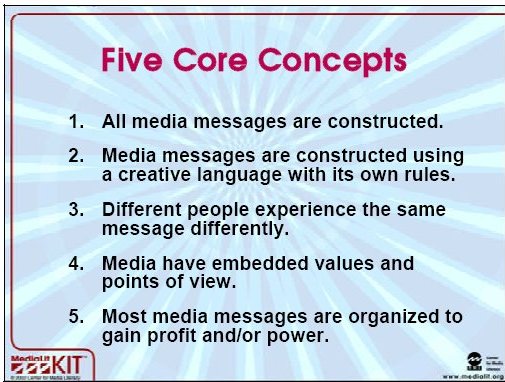
The goal of this exercise (accommodated from MediaLit.org) is to gain a better understanding of how media messages are constructed. The decision of what to include and what to leave out is made all the time as media creators struggle to balance competing needs. By enacting the role of news producers and organizing a simple 30 minute TV newscast, you can experience the process of making critical choices about what gets aired and what is never seen.
Objectives: You will be able to…
1. Experience the role of news editor.
2. Define factors that go into news judgments.
3. Explore the constructed nature of news media with a consciousness of the way subjective choices influence the news that gets reported.
Your Task(s):
I. First, go to this website of the Newseum, containing front pages from over 400 newspapers in 47 countries; the “map view” helps you locate your own local newspaper as well as cities near and far.
II. Compare various Newspapers' front pages - Which stories are on more front pages? Which are only on one front page? What feelings or impressions do you get from the different front pages? Compare headlines for the same story in the two papers. How do the headlines differ in tone and implication? How do the headlines influence the way one could read the story? Compare photographs connected with the same story in the two newspapers. In what ways are the photos similar or different? What do the photos suggest about the story? What are some ways you see that headlines and photographs affect interpretations of news stories?
III. Make your own front page. While doing it, try to think about - How and why do you decide to select certain events and exclude others? What photos/visuals do you include and why? What headlines and subheadings you chose - can they be really neutral and what kind of message do they transmit?
-
-


LESSON 7 Basic Rules of Writing offers a practical introduction to the basic rules of writing. It gives some tips and examples about the structure of a written work, and then goes on to define paragraphs as basic units and how they should be composed. In the last instances, it provides information about revising and editing as important parts of the writing process.
Watch a short introductory video to the LESSON 7.
-
Every story and every written text has a certain logic, they are all constructed according to certain principles. The aim of this short lecture Basic rules of writing (10:46),is to identify some basic writing logic or principles that (should) underline(s) all writing.
Prezi presentation of the lecture can be found here.
-
-

 LESSON 8 The topic What is Style? introduces the notion of style. You will learn and discuss several aspects and types of writing and style: diction, structure, tone, narration, grammar etc. You will also get familiar with common stylistic virtues and faults, and be provided with
LESSON 8 The topic What is Style? introduces the notion of style. You will learn and discuss several aspects and types of writing and style: diction, structure, tone, narration, grammar etc. You will also get familiar with common stylistic virtues and faults, and be provided with
illustrations about good and bad use of style and writing.Watch a short introductory video to the LESSON 8.
-
Writing Skills Test Practice Exam:
(developed by the IELTS)
 IELTS test is one of the most widespread and practically universally accepted test in English. IELTS in its full form stands for the International English Language Testing System – an English Language proficiency test developed and run by the British Council in partnership with IDP Education and Cambridge Assessment English.
IELTS test is one of the most widespread and practically universally accepted test in English. IELTS in its full form stands for the International English Language Testing System – an English Language proficiency test developed and run by the British Council in partnership with IDP Education and Cambridge Assessment English.The IELTS system is highly regarded and widely recognised as the world’s most popular English language proficiency test for higher education and global migration. Whether you are looking to study, develop your career, or settle in an English-speaking country, IELTS can pave the way.
On the link above, you can take 2 sample writing tests.
-


This lesson - Basic Principles of Composition provides practical writing tips on some of the basic principles of composition.
Watch a short introductory video to the LESSON 9.
-
The next topic in this course is the list of Top 10 Basic Principles of Composition. We follow here the famous little book called The Elements of Style, written 100 years ago by William Strunk and modified half a century ago by Elwyn White. Many considered it the best source for young journalists. In only a few dozens of pages, this book summarized most rules and typical mistakes in English language.

Prezi presentation of the lecture can be found here.
-
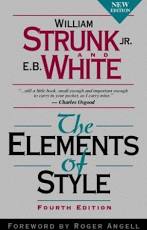 The Elements of Style is a famous short book written by William Strunk and abridged by E. B. White over a hundred years ago. It had numerous editions and is still considered one of the best manuals for good writing in English.
The Elements of Style is a famous short book written by William Strunk and abridged by E. B. White over a hundred years ago. It had numerous editions and is still considered one of the best manuals for good writing in English. Please read carefully the section - Elementary Principles of Composition pp. 15-32.
-
-


LESSON 10 Top 10 Rules of Usage offers practical writing tips on some of the basic principles of good usage & grammar in English. Following the seminal book The Elements of Style by Strunk&White, it summarizes these elements into a top 10 elementary principles of usage.
Watch a short introductory video to the LESSON 10.
-
The next topic in this course is the list of the ten elementary rules of good usage, a sort of top ten list of basic grammar rules in English, or the most common mistakes that people usually make. Our source for this is the already mentioned book Elements of Style written 100 years ago by William Strunk and modified half a century ago by Elwyn White.
Prezi presentation of the lecture can be found here.
-
 The Elements of Style is a famous short book written by William Strunk and abridged by E. B. White over a hundred years ago. It had numerous editions and is still considered one of the best manuals for good writing in English.
The Elements of Style is a famous short book written by William Strunk and abridged by E. B. White over a hundred years ago. It had numerous editions and is still considered one of the best manuals for good writing in English. Please read carefully the section - Elementary Principles of Composition pp. 1-15.
-
This website contains a list of a number of interactive quizzes on grammar and writing that you can take at will. They cover all the major fields such as: BASIC SENTENCE PARTS, VERBS AND VERBALS, CLAUSES & PHRASES, STRUCTURAL FLAWS, PUNCTUATION & BASIC MECHANICS, PRONOUN USAGE, STYLISTIC CONSIDERATIONS, NOTORIOUS CONFUSABLES, SPELLING, VOCABULARY and GENERAL GRAMMAR quizzes.
-
-

 LESSON 11 Writing
a Concept explains a particular useful tip for improving
writing and style – creating a concept and concept note that will serve as a
reminder and blueprint for the article, how to lay out the most important
information, arguments, and outline its structure.
LESSON 11 Writing
a Concept explains a particular useful tip for improving
writing and style – creating a concept and concept note that will serve as a
reminder and blueprint for the article, how to lay out the most important
information, arguments, and outline its structure.Watch a short introductory video to the LESSON 11.
-


LESSON 12 Finding Reliable Sources provides an overview on reliable and unreliable sources of information and offers examples of both types of information.
Watch a short introductory video to the LESSON 12.
-


LESSON 13 Fake News topic introduces the concept of fake or false news. It contains some basic information about fake news and how to detect them, as well as additional sources and links on the subject.
Watch a short introductory video to the LESSON 13.
-
This presentation contains some basic information about fake news and how to recognize them, as well as additional sources and links on the subject.
In sort, "fake news” are those news stories that are false: the story itself is fabricated, with no verifiable facts, sources or quotes.Additional Sources:
•Fact v. Fiction - Fake News: a useful website containing examples of fake news, fake news websites, quiz and online games for practicing identifying and recognizing fake news•Another examples of fake news websites by the Iffy.•A useful website about Identifying Fake News Sources•Stebbins, Leslie. (2015). Finding Reliable Information Online: Adventures of an Information Sleuth. Lanham, MD: Rowman & Littlefield, 2015Stebbings offers an interesting book in which each chapter presents an example of one online search for information, from a question of is red wine good for health to where to go on a holiday. She follows search engines such as Google and specialized websites and searches for sources and roots of information to show which are good and reliable sources.Balkan websites and initiatives for exposing fake news:
-
-
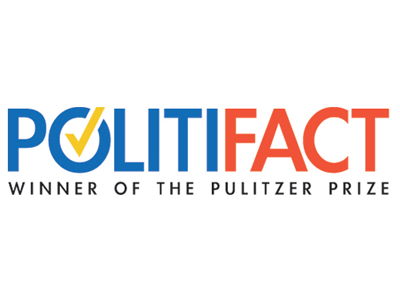
Real or fake? is a short, 10 question quiz developed by the Pulitzer-winning Politifact. These questions help you determine and evaluate if a certain website, article, or source of information is reliable or not. After you responded to the quiz, you will get a feedback telling you if the source in question is reliable, fake or dubious and needs further verification.
-
-

 LESSON 14 Fact checking introduces the
notion of checking the facts of an information, topic or an article you’re
reading or writing.
LESSON 14 Fact checking introduces the
notion of checking the facts of an information, topic or an article you’re
reading or writing.Watch a short introductory video to the LESSON 14.
-
In short, fact checking is the way of verifying the truthfulness of a text, sentence, claim, image, footage, clip or any form of media content we’re receiving, producing or publishing.
In this presentation, we will see:
1) What fact checking and fake news are in relation to investigative journalism2) Where to search for reliable information -
-
-
-

This lesson introduces the concept of the ethics of journalism, particularly ethical

principles and good practices that the responsible journalism rests upon. The discussion of the
ethics of journalism relies chiefly on the Code of Ethics by the international, USA based, Society
of Professional Journalists.Watch a sort introductory video to the LESSON 15.
-
Journalism ethics means ethical principles and good practices that journalists should use.

Society of Professional Journalists - SPJ Code of Ethics is one of the most influential and clearest expressions of ethical standards in journalism.
The four pillars of this ethics can be summarized as follows:
SEEK TRUTH AND REPORT IT - Ethical journalism should be accurate and fair. Journalists should be honest and courageous in gathering, reporting and interpreting information.
ACT INDEPENDENTLY - The highest and primary obligation of ethical journalism is to serve the public.
BE ACCOUNTABLE AND TRANSPARENT - means taking responsibility for one's work and explaining one’s decisions to the public.
MINIMIZE HARM - treat sources, subjects, colleagues and members of the public as human beings deserving of respect.
-
-


LESSON 16
Improving the First Draft topic introduces the ways of improving your writing after you’ve made the first version. You will learn about how to approach your writing as a draft, distance yourself from your writing and consider it objectively, in order to improve it.
Watch a short introductory video to the LESSON 16.
-


LESSON 17 Youth Activism
This topic introduces the notion of youth activism. You will get familiar with some details about Youth Activism in general, and then focus in particular on Youth Activism in the realm of the media.Watch a sort introductory video to the LESSON 17.-
In this section of the course, we will talk about Youth activism. Firstly, I will provide some details about Youth Activism in general, and then focus in particular on Youth Activism in the realm of the media. I will discuss issues such as: What is youth activism, why is it important, what forms of youth activism are there, how do young people become activists, how to use social media as a tool for youth activism and so on. We will then go to explore in some detail two representative cases of youth activism. The first case study will be dedicated to a documentary called Kony 2012, which became viral and led to an international intervention intended to bring down a suspected war criminal. The second study case is the story of Malala Yousafzai, the youngest-ever Nobel Prize laureate.
A short opening lecture entitled Youth activism explaining the notion of youth activism.
Powerpoint presentation of the lecture can be found here.
-
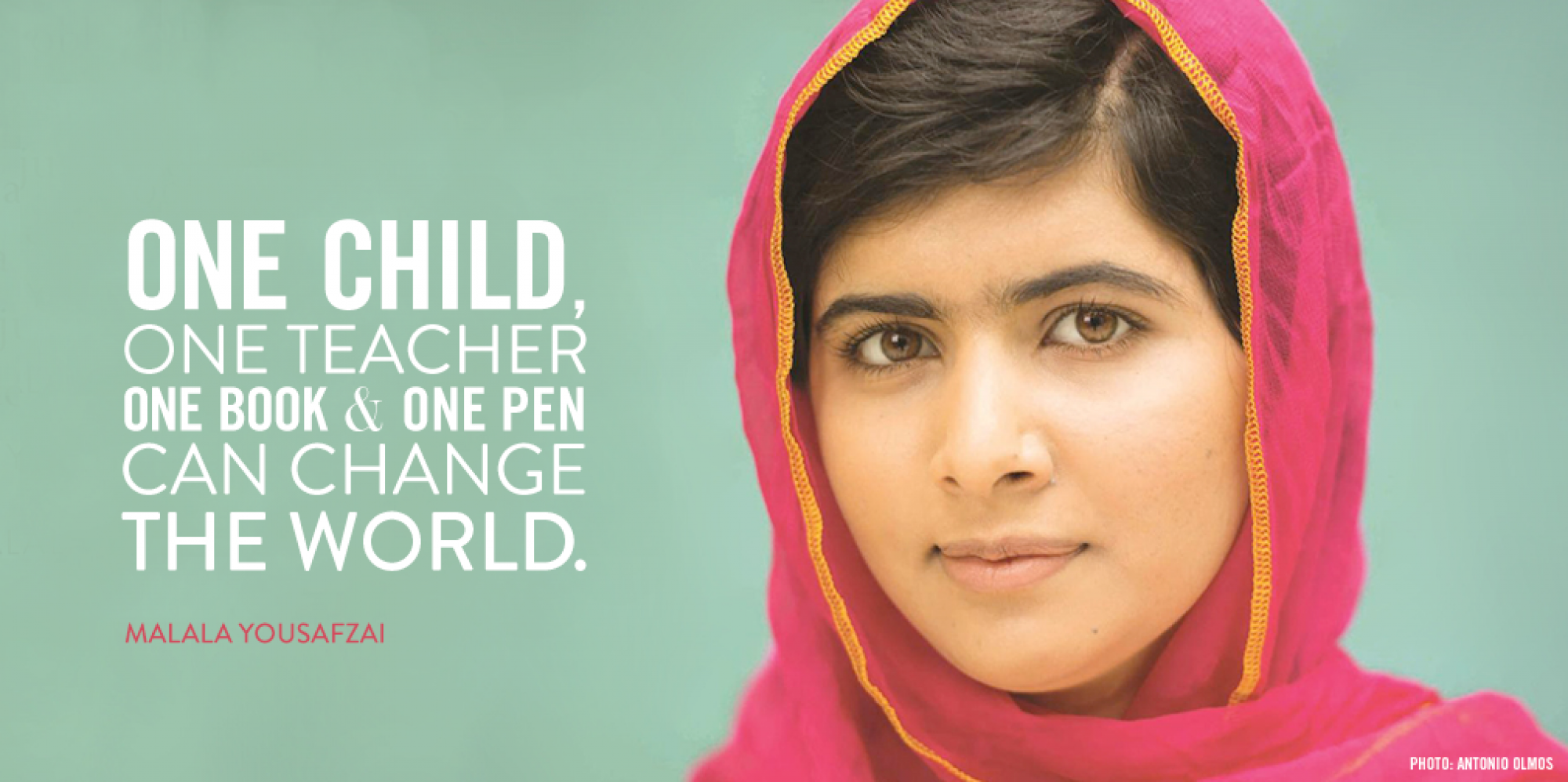 Malala Yousafzai was only 17 when she received a Nobel Prize for peace for her struggle against the suppression of children and young people and for the right of all children to education. Malala was born in the region known as the Swat valley in Pakistan, which is close to the Afghanistan border. Her family ran several schools in the region, and as a girl, she was a good pupil and dreamt of becoming a doctor. Her region had at times shifted under the control of the Taliban, who imposed strict laws in the places that they control and banned the girls from taking education under the threat of punishment or death.A short introductory video about Malala Yousafzai.
Malala Yousafzai was only 17 when she received a Nobel Prize for peace for her struggle against the suppression of children and young people and for the right of all children to education. Malala was born in the region known as the Swat valley in Pakistan, which is close to the Afghanistan border. Her family ran several schools in the region, and as a girl, she was a good pupil and dreamt of becoming a doctor. Her region had at times shifted under the control of the Taliban, who imposed strict laws in the places that they control and banned the girls from taking education under the threat of punishment or death.A short introductory video about Malala Yousafzai.
A documentary about Malala called Class dismissed is available here.
In her Nobel lecture, Malala Yousafzai humbly emphasized that she is acting on behalf of thousands, even millions of young girls in the world who are deprived of education, and she also invited several of her young friends from different parts of the world who are fighting for the same thing to be present there during the ceremony. She is currently continuing her struggle and has opened a school for the Syrian refugees in Lebanon, and this school offers education and training to girls between 14 and 18 years of age. As the last part of the story of Malala Yousafzai and the ability of one young person to influence the world, we are giving here her Nobel Peace Prize speech in full.
. -
Greta Thunberg is a Swedish teenage environmental activist who is internationally known for challenging world leaders to take immediate action against climate change. Thunberg initially gained notice for her youth and her straightforward speaking manner, both in public and to political leaders and assemblies, in which she criticises world leaders for their failure to take what she considers sufficient action to address the climate crisis.
After Thunberg addressed the 2018 United Nations Climate Change Conference, student strikes took place every week somewhere in the world. In 2019, there were multiple coordinated multi-city protests involving over a million students each. To avoid flying, Thunberg sailed to North America where she attended the 2019 UN Climate Action Summit. Her speech there, in which she exclaimed "How dare you", was widely taken up by the press and incorporated into music.
Her sudden rise to world fame has made her both a leader and a target for critics, especially due to her age. Her influence on the world stage has been described by The Guardian and other newspapers as the "Greta effect". She received numerous honours and awards, including an honorary Fellowship of the Royal Scottish Geographical Society, inclusion in Time's 100 most influential people, being the youngest Time Person of the Year, inclusion in the Forbes list of The World's 100 Most Powerful Women (2019), and three consecutive nominations for the Nobel Peace Prize (2019–2021).
Greta's 2019 speech How dare you?I am Greta is a 2020 documentary that follows Greta Thunberg, a teenage climate activist from Sweden, on her international crusade to get people to listen to scientists about the world's environmental problems. Greta Thunberg, 15, starts school striking for the climate. She skips school and sit outside the parliament to show the politicians that if they don't care about her future, why should she? A film about acting to stop climate change before it's too late.
-
-


LESSON 18
Social Media & Activism discusses the concept of activism in the realm of social media. You will learn about the notion of social media in general, about the debates surrounding it, especially regarding the question of whether social media increases or decreases activism and political activity in young people.
Watch a sort introductory video to the LESSON 18.
-
Social Media and Youth Activism Lecture address the issue of youth activism in the contemporary IT environment. Some scholars argue that youth activism today is at its lowest points. They emphasize movements such as those in the USA, for example, Black Panthers who fought for the rights of black and oppressed people in America, or student movement and anti-war movement during the Vietnam war. The students were also heavily involved in social justice for the civil rights movement, the women’s liberation movement, and gay rights, as well as environmental issues and freedom of speech, among other things. Today, some say, youth are self-centered, narcissistic and so on, and they take no part in civic participation.
Others think that countless youth are civically engaged and involved in movements outside of traditional
political groups. Kassimir concludes that “our
understanding of contemporary youth activism – local and global, national and transnational – lags woefully behind the political practices of young people… Many young people have found their voices and are speaking up for change”.
So, how are young people using social media as tools for activism?
Facebook and Twitter are used resources for youth activism: technological advancement has necessitated a new way of understanding activism among young people. The nowadays world is being transformed by young people, “but crucially through means and methods that are unfamiliar to adults”.
Powerpoint presentation of the lecture can be found here.
-
 Kony 2012 is a documentary produced by a charity called Invisible children in 2012. The organisation Invisible Children was founded in 2004 by three filmmakers Jason Russell, Bobby Bailey and Lauren Poole to raise awareness and to bring to justice Joseph Kony, who was the leader of the Lords Resistance Army. This paramilitary formation was at the time responsible for the abduction of thousands of children, rape, pillage and it caused the displacement of over a million people in Uganda. In 2005, a year after Invisible Children was formed, Joseph Kony became the most wanted man by the International Criminal Court, and his actions were described as having no ulterior political or ethical motifs except him imposing his brutal power.
Kony 2012 is a documentary produced by a charity called Invisible children in 2012. The organisation Invisible Children was founded in 2004 by three filmmakers Jason Russell, Bobby Bailey and Lauren Poole to raise awareness and to bring to justice Joseph Kony, who was the leader of the Lords Resistance Army. This paramilitary formation was at the time responsible for the abduction of thousands of children, rape, pillage and it caused the displacement of over a million people in Uganda. In 2005, a year after Invisible Children was formed, Joseph Kony became the most wanted man by the International Criminal Court, and his actions were described as having no ulterior political or ethical motifs except him imposing his brutal power.
-
-


LESSON 19
Publishing & Posting
This lesson presents you with some opportunities to publish & post your work. Mostly dedicated to written articles, this topic first mentions and shows this projects’ Transnational Youth Magazine or TYM, as the first address and opportunity for your work to get published.Watch a short introductory video to the LESSON 19.
-

The Translational Youth Magazine (TYM) is a rebranded journal emerging from the Mediactive Youth initiative. It contains many texts of your young activists, from dozens of countries worldwide. Some of the young activists had their first articles published here, so we welcome your contribution, irrespective of whether you are a beginner or experienced author.
-


LESSON 20
Blended Learning
This lesson provides an introduction to the blended learning method. You will learn about the concept of blended learning and its definition as a teaching practice that integrates online with traditional face-to-face class activities for the purpose of improving learning methods.Watch a sort introductory video to the LESSON 20.-

The website Teachtought provides a useful and illustrative chart with 12 Examples Of Blended Learning
-
What is Blended Learning, a useful, short video introducing this concept, produced by MBHU, defines blended learning as follows:
Blended learning describes a fundamental change in education design by utilising a combination of digital learning objects and active learning methods to improve the learning experience and outcomes. A teaching session created with a blended learning model uses the face-to-face teaching time for activities that benefit the most from direct interaction.
Another Youtube video, Blended Learning & flipped classroom, explains what Blended Leaning is in detail, and especially illustrates one of its main models – Flipped Classroom- which is the most commonly used and proven to be fruitful.
What is blended learning? Blended learning is an education technique involving a combination of online materials and in-person instruction. Flipped classroom is a type of blended learning where students view their lecture material at home and do coursework in class. Find more videos at http://osms.it/more.
Finally, this third clip, Blended Learning: Making it Work in Your Classroom, produced by Edutopia, is an example of what Blended Learning looks in a classroom, and defines it as follows:
A school-wide approach to blended learning that allows teachers the flexibility to define and implement online instruction that meets their students’ needs.
-




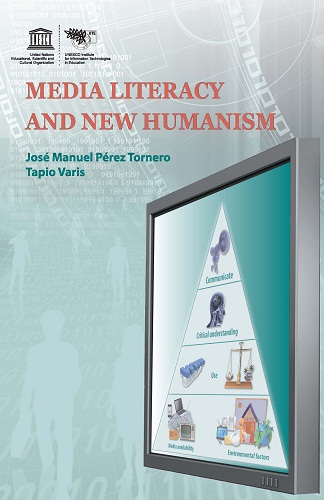














 This Kahoot Quiz helps you in revising the topic on un/reliable
This Kahoot Quiz helps you in revising the topic on un/reliable 








